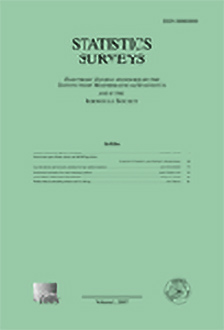Abstract
A finite set is “hidden” if its elements are not directly enumerable or if its size cannot be ascertained via a deterministic query. In public health, epidemiology, demography, ecology and intelligence analysis, researchers have developed a wide variety of indirect statistical approaches, under different models for sampling and observation, for estimating the size of a hidden set. Some methods make use of random sampling with known or estimable sampling probabilities, and others make structural assumptions about relationships (e.g. ordering or network information) between the elements that comprise the hidden set. In this review, we describe models and methods for learning about the size of a hidden finite set, with special attention to asymptotic properties of estimators. We study the properties of these methods under two asymptotic regimes, “infill” in which the number of fixed-size samples increases, but the population size remains constant, and “outfill” in which the sample size and population size grow together. Statistical properties under these two regimes can be dramatically different.
Citation
Si Cheng. Daniel J. Eck. Forrest W. Crawford. "Estimating the size of a hidden finite set: Large-sample behavior of estimators." Statist. Surv. 14 1 - 31, 2020. https://doi.org/10.1214/19-SS127
Information





